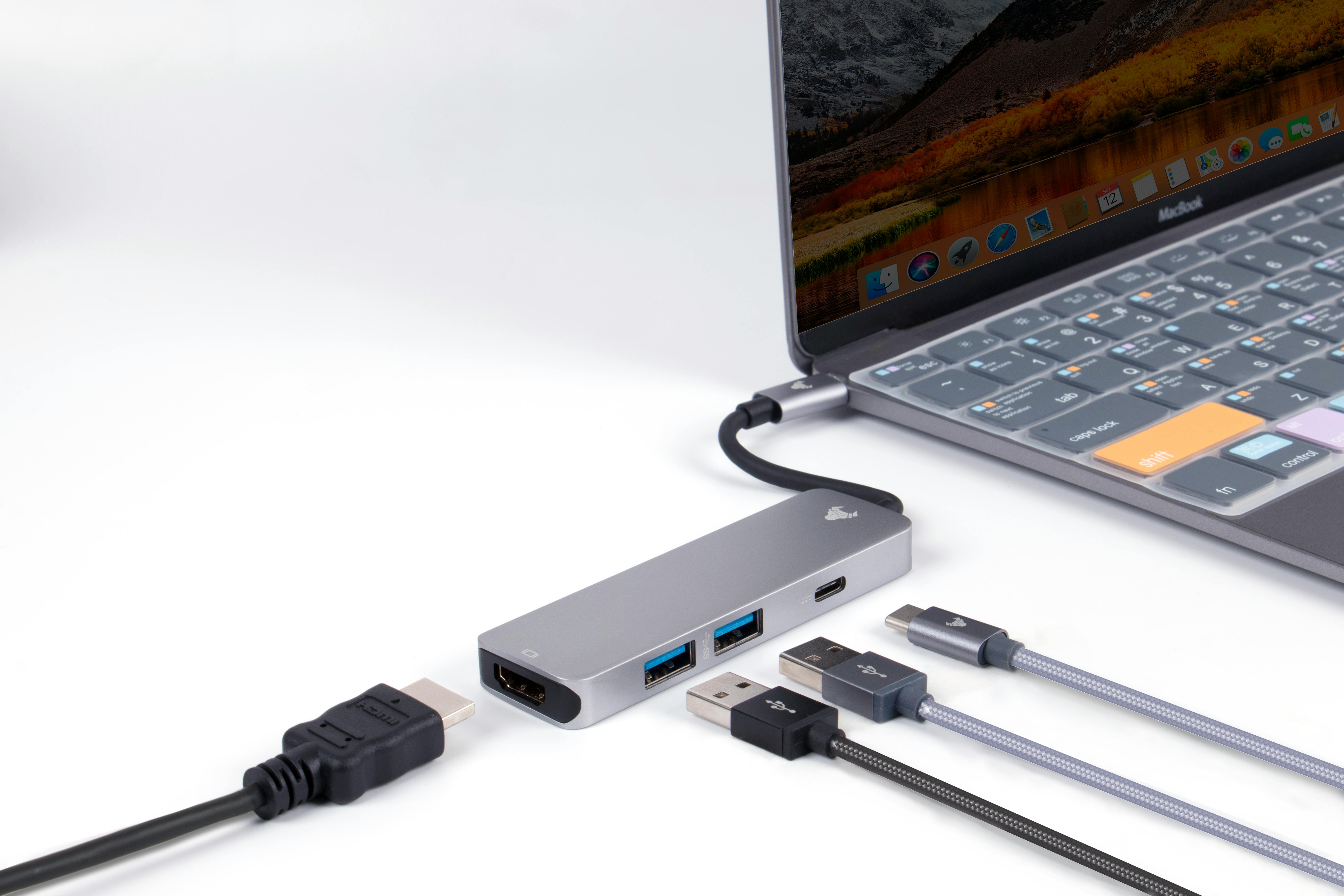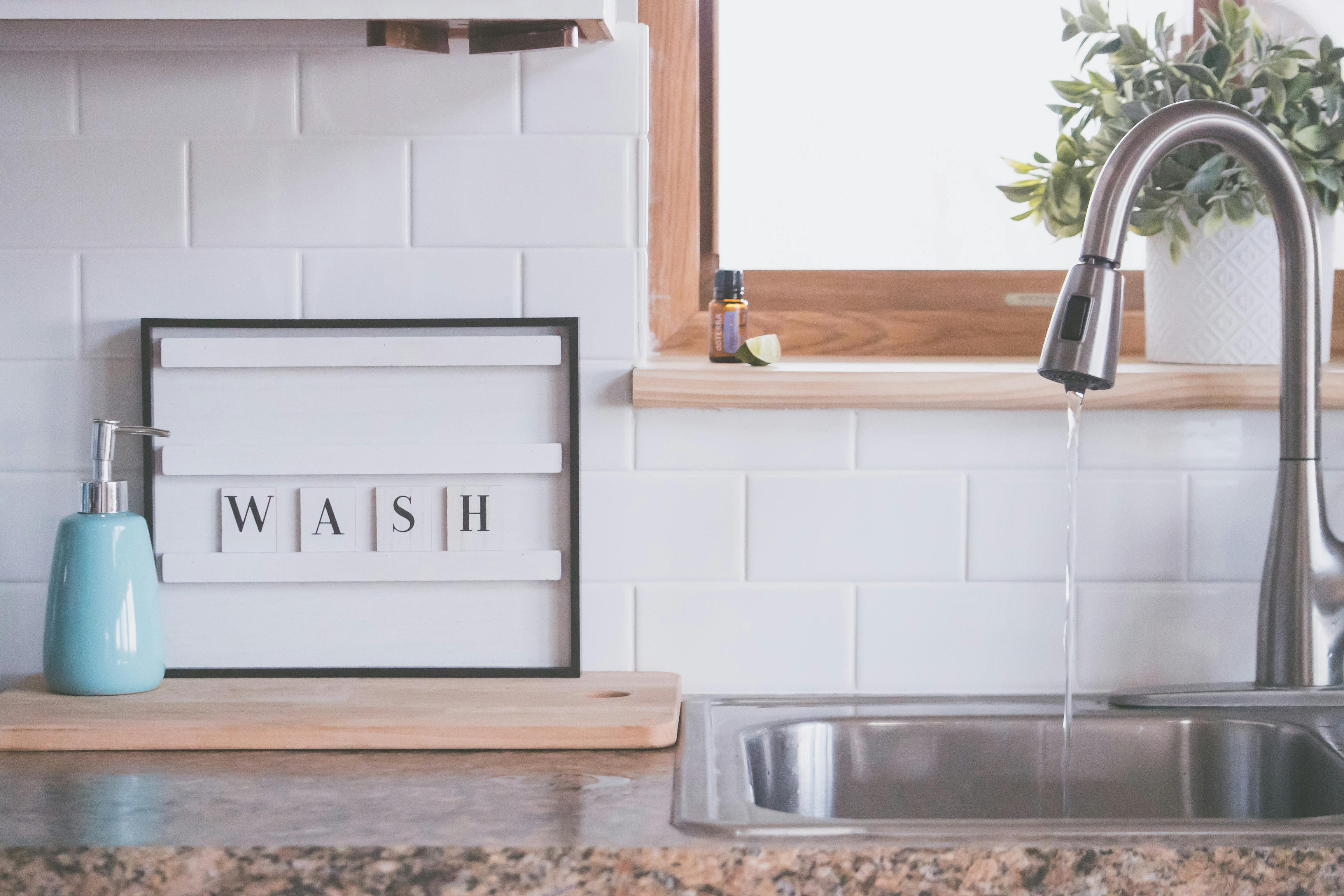Are you experiencing frustrating Windows 11 USB port failures that are hindering your productivity? Don’t let a malfunctioning USB port hold you back from unlocking your device’s full potential! In this article, we will explore effective solutions to resolve Windows 11 USB port failures, ensuring that your devices stay connected and functional. Whether it’s your mouse, keyboard, or external hard drive, finding a fix for these issues can dramatically improve your computing experience.
In today’s tech-driven world, having reliable USB ports is crucial for seamless connectivity. Are you tired of repeatedly plugging and unplugging your devices, only to be met with error messages or unrecognized peripherals? Fear no more! We’ll guide you through the top troubleshooting steps and advanced techniques to diagnose and fix these common hiccups. From checking hardware connections to updating drivers, you will learn how to tackle USB issues head-on.
Imagine the relief of finally resolving those pesky USB port failures in Windows 11. What if you could troubleshoot like a pro and regain full control over your devices? In the following sections, we will delve into practical solutions that not only address current USB port problems but also help prevent future failures. So, are you ready to dive into this tech challenge and restore your device’s functionality? Let’s get started and unlock the potential of your Windows 11 experience!
Top 7 Proven Solutions to Fix USB Port Failures on Windows 11 Devices

USB port failures on Windows 11 devices can be really frustrating, especially if you rely on them for your daily tasks. These issues can disrupt your workflow, making it difficult to connect crucial peripherals like keyboards, mice, or external storage devices. Luckily, there’s a good number of solutions that can help you resolve Windows 11 USB port failures and unlock your device’s full potential. Here are the top 7 proven solutions that you can try.
1. Check Hardware Connections
First of all, it’s important to make sure that the USB devices are properly connected. Sometimes, it’s just a matter of unplugging and re-plugging it into the port. Also, try different USB ports on your device. If some ports work and others don’t, then it might indicate a hardware issue with the non-working ports.
2. Restart Your Computer
It might sound simple, but restarting your computer can fix a lot of temporary glitches that cause USB ports not to work. When you restart, the operating system refreshes, and any temporary settings that might have affected USB connections get cleared.
3. Update USB Drivers
Outdated or corrupted drivers often lead to USB port failures. To update your drivers, follow these steps:
- Go to Device Manager by right-clicking the Start button.
- Expand the Universal Serial Bus controllers section.
- Right-click on each USB device and select Update driver.
- Follow the prompts to check for updates.
If you find an update, install it and then restart your PC.
4. Disable USB Selective Suspend
USB selective suspend is a power-saving feature that might sometimes cause issues. To disable it, do the following:
- Search for Control Panel in the Start menu.
- Click on Power Options.
- Select Change plan settings next to your current power plan.
- Click on Change advanced power settings.
- Scroll to USB settings and set USB selective suspend setting to Disabled.
This may solve the issue if the USB ports are being disabled to save power.
5. Run the Hardware and Devices Troubleshooter
Windows 11 includes a built-in troubleshooter that can help identify and fix problems. To access it:
- Open Settings and go to System.
- Click on Troubleshoot, and then select Other troubleshooters.
- Find the Hardware and Devices troubleshooter and run it.
This tool scans for issues and provides suggestions on how to solve them.
6. Check for Windows Updates
Keeping your Windows 11 updated is crucial for smooth functioning. Sometimes, Microsoft releases updates that fix known bugs, including USB-related issues. To check for updates:
- Go to Settings.
- Click on Windows Update and select Check for updates.
- Install any available updates.
After updating, restart your computer and see if the USB ports are working again.
7. Reset Your PC
If nothing else works and the USB ports are still failing, consider resetting your PC. This option should be your last resort, as it may remove some of your applications and settings. To reset:
- Go to Settings.
- Click on System and select Recovery.
- Click on Reset PC and choose the appropriate option.
A reset can eliminate software issues causing USB failures.
USB port failures can be really annoying, but by following these steps, you may resolve Windows 11 USB port failures effectively. Remember to try these solutions one by one, and soon you will be able to reconnect your devices and get back to work. Don’t let USB issues hold you back!
Why Is My USB Port Not Working? Uncover 5 Common Causes in Windows 11

When your USB port not working, it can be quite frustrating, especially if you rely on it for connecting devices. Many Windows 11 users face this issue, and understanding why this happens can be a key to unlocking your device’s potential. Here, we uncover five common causes of USB port failures and how to resolve these issues effectively.
Hardware Problems
One of the most frequent reasons for USB port failures is hardware issues. This could be due a faulty USB port itself, which can happen from wear and tear over time. If you notice that your USB device works on another computer but not yours, the problem may lie with the port. Inspect the port carefully for any physical damage. Look for bent pins or debris. Cleaning it gently with compressed air may help, but if it’s damaged, you might need a hardware repair.
Outdated Drivers
Another common issue is outdated or corrupted drivers. Drivers are essential as they allow your operating system to communicate with your USB devices. In Windows 11, you can check for driver updates easily. Just go to Device Manager, find the Universal Serial Bus controllers, right-click, and select “Update driver.” If you see a yellow triangle on any of the devices, it’s a sign that you need to update them. Keeping your drivers up-to-date can solve many connectivity issues.
Power Management Settings
Windows has a feature called Power Management that may cause USB ports to stop working properly. Sometimes, the operating system turns off USB ports to save power, especially on laptops. You can check these settings by going to Device Manager, right-clicking on each USB Root Hub, and selecting “Properties.” Under the Power Management tab, uncheck the box that says, “Allow the computer to turn off this device to save power.” This can help ensure your USB ports stay active when needed.
Conflicting Software
Software conflicts can create havoc on your USB ports as well. Sometimes, newly installed software or updates can cause incompatibilities that lead to USB failure. If you recently added a new program, try uninstalling it to see if that resolves the problem. Additionally, running a system file check can help. Open Command Prompt as an administrator and type “sfc /scannow.” This will scan for corrupted files and repair them, which may fix any software conflicts affecting your USB ports.
Faulty USB Device
Lastly, it’s important to consider that the issue might not be with your computer at all but rather with the USB device itself. If your USB device is malfunctioning, it will not work on any port. To check this, try plugging the device into a different computer. If it doesn’t work there either, the device may need replacing or repairing.
Quick Checklist to Diagnose USB Issues:
- Inspect USB port for damage or obstruction.
- Update USB drivers through Device Manager.
- Adjust Power Management settings to prevent USB shutdown.
- Look for conflicting software that may cause issues.
- Test the USB device on another computer.
Addressing USB port failures in Windows 11 can seem daunting, but it’s often more manageable than you think. With a little troubleshooting, you can resolve these common issues. Remember, it’s not just about fixing a problem; it’s about unlocking your device’s full potential. Whether you’re using your USB ports for storage, peripherals, or charging, keeping everything in working order is key to a smooth computing experience.
Step-by-Step Guide: How to Diagnose and Repair USB Port Issues in Windows 11

USB port issues can be quite a headache, especially when you rely on them for your devices. If you’re using Windows 11 and you’re having trouble with your USB ports, don’t worry, you not alone. This step-by-step guide will help you diagnose and repair USB port issues, unlocking your device’s potential. Let’s dive into how you can resolve Windows 11 USB port failures and get back to work.
Understanding USB Port Issues
USB ports can fail for various reasons. It could be hardware-related, like a damaged port, or software-related, like driver issues. Sometimes, it’s just a matter of settings that need adjusting. Here are some common signs that you might have USB port problems:
- Devices not recognized
- Error messages when plugging in USB devices
- Devices not charging
- USB ports feeling loose or damaged
Step 1: Check Physical Connections
First things first, inspect the USB port. Look for any visible damage or debris. Sometimes, a simple cleaning can make a difference. Use a can of compressed air or a soft brush to gently clean out the port. After that, plug in a different device to see if it’s recognized. If it works, the problem might be with the original device.
Step 2: Restart Your Computer
It sounds simple but a restart can fix many temporary glitches. After restarting, plug your USB device in again to check if it works. This can refresh the drivers and settings, potentially resolving any issues.
Step 3: Update Drivers
Outdated or corrupted drivers can often cause USB ports to fail. Here’s how to update them:
- Right-click on the Start button and select Device Manager.
- Expand the Universal Serial Bus controllers section.
- Right-click on each USB device and select Update driver.
- Choose “Search automatically for updated driver software.”
If updates are found, follow the prompts to install them. After updating, restart your computer and check the USB ports again.
Step 4: Run the Hardware and Devices Troubleshooter
Windows 11 has built-in troubleshooters that can help fix hardware issues, including USB ports. Here’s how to run it:
- Go to Settings > System > Troubleshoot > Other troubleshooters.
- Find the Hardware and Devices troubleshooter and click Run.
Once this tool finish running, follow any suggested fixes.
Step 5: Check Power Management Settings
Sometimes, the power management settings can disable USB ports to save energy. You can check this by:
- Go back to Device Manager.
- Right-click on each USB Root Hub and select Properties.
- Go to the Power Management tab.
- Uncheck “Allow the computer to turn off this device to save power.”
Repeat this for all USB Root Hubs and restart your computer.
Troubleshooting Checklist
- Inspect USB port for damage or dirt.
- Restart your computer.
- Update USB drivers.
- Run the Hardware and Devices troubleshooter.
- Adjust power management settings.
When to Seek Professional Help
If all else fails, it might be time to consider professional help. If your USB ports are still not working after trying these steps, it could indicate a deeper hardware issue that require repairs.
By following these steps, you can effectively diagnose and repair USB port issues in Windows 11, helping you resolve Windows 11 USB port failures. It’s always good practice to keep your drivers updated and your system maintained to prevent future issues. Don’t let USB problems hold you back; unlock your device’s full potential today!
The Ultimate Checklist: 9 Essential Tips to Prevent USB Port Failures in Windows 11

In the fast-paced world of technology, USB ports are vital for connecting a wide array of devices. But, sometimes, Windows 11 users confront pesky USB port failures, which can hinder productivity and frustrate anyone. Luckily, there are ways to prevent such failures. Here’s the ultimate checklist with 9 essential tips to keep your USB ports functioning smoothly and unlock your device’s full potential.
1. Keep Windows Updated
One major reason for USB port failures could be outdated software. Windows 11 frequently releases updates that fix bugs and improve compatibility. Make sure to regularly check for updates by going to Settings > Windows Update. This simple step could save you from a lot of trouble.
2. Inspect Physical Connections
Sometimes, the issue is as simple as a loose connection. Inspect your USB ports and devices for any physical damages. Dust and debris can also accumulate over time, causing connectivity issues. Use compressed air to clear out any obstructions, making sure your ports are clean and functional.
3. Use High-Quality USB Cables
Using subpar or damaged USB cables can lead to unreliable connections and potential failures. Invest in good quality cables that are compatible with your devices. This small change can make a big difference in preventing USB port issues.
4. Disable USB Power Savings
Windows 11 has a feature that allows it to save power by turning off USB ports when they’re not in use. But this feature can lead to connectivity problems. To disable it, go to Device Manager, find the USB Root Hub, and uncheck the box that allows the computer to turn off the device to save power. This could be a quick fix for many users.
5. Check Device Drivers
Outdated or corrupted drivers often lead to USB port failures. Always ensure that your device drivers are up-to-date. You can do this by right-clicking on the Start button, selecting Device Manager, and looking for any warning signs next to your USB devices. Updating these drivers can resolve many issues.
6. Avoid Overloading USB Ports
Connecting too many devices at once can overload your USB ports. Each port has a power limit, and exceeding that can cause failures. Make sure to distribute your devices across multiple ports, or use a powered USB hub to manage multiple connections safely.
7. Use the Correct USB Version
Not all USB ports are created equal. They come in different versions, such as USB 2.0, 3.0, and 3.1, each with its own speed and power capabilities. Ensure that you are using devices that are compatible with the ports available on your Windows 11 machine.
8. Regularly Check for Malware
Malware can interfere with your computer’s operations, including USB functions. Make sure to run regular scans with reliable antivirus software to keep your system clean. This proactive step can prevent a multitude of issues, including USB port failures.
9. Restart Your Computer
This might sound too simple, but sometimes, a good old restart can resolve many software-related issues. If you encounter USB port problems, try restarting your computer. This can refresh the system and fix temporary glitches.
By following this checklist, you can significantly reduce the chances of USB port failures in Windows 11. It’s all about being proactive and taking small steps to maintain your device. Remember, a well-cared-for system can unlock your device’s true potential, allowing you to work more efficiently and with fewer interruptions. Embrace these tips and keep your USB ports running smooth; your productivity will thank you!
Are You Experiencing USB Port Issues on Windows 11? Here’s What You Need to Know!

Are you experiencing USB port issues on Windows 11? This can be a frustrating problem that many users face, but don’t worry, there’s hope! USB port failures can affect your productivity, especially if you rely on peripherals like keyboards, mice, and external storage devices. In this article, we will delve into the common causes for these issues and provide you with practical solutions to resolve Windows 11 USB port failures.
Common Causes of USB Port Issues on Windows 11
There are several reasons why your USB ports may not work properly on Windows 11. Here’s a quick rundown of some of the most frequent culprits:
- Driver Problems: Outdated or corrupted drivers are often the root cause of USB failures. If Windows 11 updates your system, it might also mess up your drivers.
- Hardware Malfunctions: Sometimes, it’s not the software at fault. Physical damage to USB ports or connected devices can cause issues.
- Power Management Settings: Windows has power-saving features that can turn off USB ports to save energy, which sometimes leads to connectivity problems.
- Conflicting Software: Occasionally, certain programs can interfere with USB functionality, causing devices not to be recognized.
Quick Fixes to Resolve USB Port Failures
If you find yourself dealing with USB port issues, there are several steps you can take to troubleshoot and possibly fix the problem.
- Restart Your Computer: It’s the simplest fix but often overlooked. A quick reboot can refresh the system and resolve minor glitches.
- Check Physical Connections: Make sure the USB device is plugged in securely. Try different ports to see if one works while others do not.
- Update USB Drivers:
- Right-click the Start button.
- Select Device Manager.
- Expand the Universal Serial Bus controllers section.
- Right-click on each USB device and select “Update driver.”
- Disable Power Management:
- In Device Manager, right-click on your USB Root Hub.
- Click on Properties, then the Power Management tab.
- Uncheck “Allow the computer to turn off this device to save power.”
- Run the Hardware Troubleshooter:
- Go to Settings > Update & Security > Troubleshoot > Additional troubleshooters.
- Select Hardware and Devices and run the troubleshooter.
Advanced Solutions for Persistent Issues
If you tried the basic fixes and your USB ports still don’t work, don’t lose hope! There are advanced troubleshooting methods that could help.
- Check for Windows Updates: Sometimes, Microsoft releases updates specifically to fix bugs. Go to Settings > Update & Security and check for updates.
- Use System Restore: If the issue started recently, restoring your system to an earlier point can undo changes that might’ve caused the problem.
- Reinstall USB Controllers: In Device Manager, right-click on each USB controller and choose “Uninstall device.” Restart your computer, and Windows will reinstall the drivers.
- BIOS Settings: Occasionally, USB ports can be disabled in the BIOS. Restart your computer and enter BIOS settings to check if USB is enabled.
When to Seek Professional Help
If all else fails, and you’re still having trouble, it may be time to consult with a professional. A technician can diagnose hardware issues that you might not be able to see. Plus, if your device is under warranty, it could save you money in repairs.
Experiencing USB port issues on Windows 11 can be annoying, but you have options. By following these steps, you can unlock your device’s potential and ensure that everything runs smoothly. Remember, persistence pays off, and there’s usually a solution out there for every tech problem!
Conclusion
In conclusion, troubleshooting USB port failures in Windows 11 can be effectively managed by following a systematic approach. We explored various methods, including checking hardware connections, updating drivers, and adjusting power management settings to ensure optimal performance. Additionally, we discussed the importance of using Device Manager to identify and resolve conflicts, as well as the potential benefits of running the built-in hardware troubleshooter. For persistent issues, considering a system restore or even reinstallation of Windows 11 may be necessary. Remember, keeping your system and drivers updated is crucial for preventing future USB port failures. If you encounter these problems, don’t hesitate to implement the solutions we’ve outlined. For ongoing support and troubleshooting tips, subscribe to our blog and stay informed on the latest in technology solutions. Your USB devices deserve to work flawlessly, so take action today and restore their functionality!

